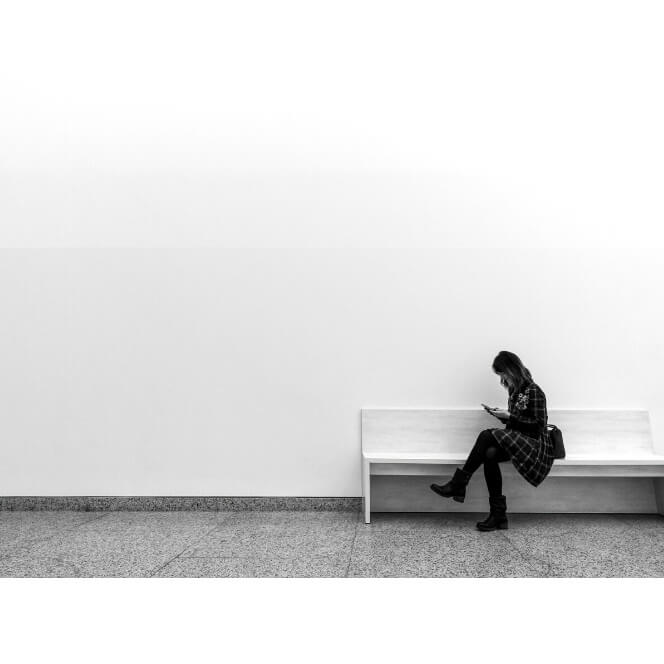During one of these quarantine-days, scrolling down my Facebook feed, I found a story about a friend in Naples. Giuseppe is an actor, theatre director and writer. He often posts stories about his daily life during these challenging times. He formed a friendship with his butcher’s helper, Ferdinando. During one of their encounters, Ferdinando told him how boring and difficult quarantine is for him and his family who must live all together, under the same roof, day and night. Giuseppe asked if he had Netflix, and when Ferdinando said no, he offered his password. The story ends with Ferdinando discovering, watching and enjoying movies and TV shows until then unknown and with Ferdinando thanking Giuseppe for making the confinement more tolerable for him and his family.
The story of Giuseppe and Ferdinando shows how platforms such as Netflix are allowing many to access a wide range of cultural products. The anecdote also demonstrates that cultural products are not just consumed according to taste, but also according to circumstance.
The question then is whether the consumption of culture is changing during this pandemic. To be brief, I will focus on two online streaming platforms, namely Netflix and Spotify, and two artforms, movies and music. I conclude that culture plays an important role in helping people cope.
In his study on museums, Pierre Bourdieu argued that even when museums make their art more accessible to audiences, those who attend these exhibitions are always those who are used to going to museums. According to the French sociologist, in fact, “cultural needs are the product of upbringing and education” (Pierre Bourdieu, 1984, 1). In other words, those who acquired a certain taste for specific artworks will probably maintain it.
As it is well known, the first institutions government officials shut down at the beginning of the pandemic were museums, cinemas and theatres. In a desperate effort to survive, some theatre and museum directors moved their collections, operas and plays online. We can now access these artworks from our living rooms: the Globe allows audiences to access plays online; the Tate Modern and MoMA offer virtual tours to visitors.
But in this digital era, who will visit these online exhibitions and attend these virtual performances? Will it be those who were already going to theatres and museums before the outbreak? Or will it be a new audience that now finds financially and logistically easier to access these exhibitions and watch these performances?
Like their brick-and-mortar cultural counterparts, the directors of streaming platforms are also adapting to the new situation. If before the pandemic, the platforms competed with real world movie theatres and music stores, now they are suddenly one of the only sources of ‘cultural output’ available. In fact, so many people rushed to these platforms that the internet was about to ‘collapse’. The likes of Netflix and YouTube followed the calls of European Union leaders to reduce video streaming quality.
As we all know, these platforms provide access to a variety of different genres and types of music, film and documentaries. The artistic products – some commercial, some experimental – come from all over the world. Initially at least, this variety of choice allows audiences to consume artistic products never seen before. It is difficult to establish if people are changing their habits while house-bound. It is possible that the obligation to stay home and the constant feeling of uncertainty might be pushing people to change their tastes, or at least go beyond their comfort zone.
Docuseries and films such as Contagion, Pandemic: How to Prevent an Outbreak, Containment, and Outbreak have been the most popular titles streamed on Netflix. On Spotify, songs such as Don’t stand so close to me were streamed 135 per cent more than before. Likewise, the consumption of news, sports and health podcasts has increased. More than ever (another historical precedent set by the pandemic), a record number of parents are playing music and podcasts for their children. According to Spotify, relaxing music has never been so popular.
One factor that might push or nudge people towards new genres, is not isolation and social distancing, but in fact social relationships and the ubiquity of curated lists. On Facebook, users exchange ideas about which series or film to watch next. On Spotify, users create collaborative playlists, connecting with those who listen to the same music. Meanwhile, online newspapers and magazines are rife with the top-ten of this and that artform.
So perhaps this pandemic is affecting popular culture consumption and even people’s tastes. Further studies focusing on audiences’ taste and social class could help update Bourdieu’s social theory. The idea here would be to focus on displacement, disorientation, and other extreme circumstances that make people aware of their tastes and habits. In making new routines under COVID-19 maybe people are becoming more conscious of their old routines and questioning them more.
Meanwhile we can acknowledge that art has never been so important. It helps the locked-down maintain their mental health. Art is also a pretext for exchange and communication, shortening distances and allowing social relationships to endure. When this pandemic is over, we should not forget the role that artists and artworks played during these unsettling and trying times, making them more bearable for all of us.
References
Pierre Bourdieu (1984) Distinction:A Social Critique of the Judgement of Taste. Cambridge, Massachusetts: Harvard University Press.
Dr Giovanna Di Mauro is a Lecturer in International Peace and Conflict Studies at Collegium Civitas in Warsaw. Twitter: @DiMauroGiovanna


